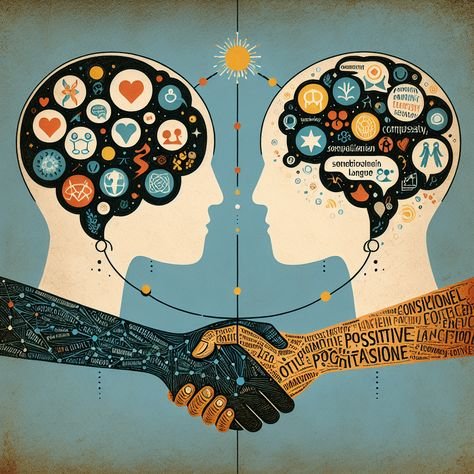Redefining “Smart”: The Enduring Impact and Contested Nature of Multiple Intelligences in Education
Howard Gardner’s Theory of Multiple Intelligences (MI), introduced in his 1983 book Frames of Mind, fundamentally challenged the long-held belief that human intellect could be captured by a single, static score. [1][2] He proposed that instead of one general intelligence, humans possess a portfolio of distinct, relatively independent intelligences. [3][4] This framework has profoundly influenced education, offering a more democratic and expansive vision of student potential. [5][6] However, its widespread adoption in schools exists alongside vigorous debate within the scientific community, which questions its empirical foundations and practical efficacy. [7][8] A deep examination of the theory reveals a complex landscape where a powerful pedagogical philosophy confronts the rigors of scientific validation, forcing a critical look at how we define, nurture, and assess human capability.
At its core, the Theory of Multiple Intelligences posits that intelligence is a “biopsychological potential to process information that can be activated in a cultural setting to solve problems or create products that are of value in a culture.” [3][4] This definition intentionally breaks from the narrow focus of traditional IQ tests, which historically prioritized linguistic and logical-mathematical abilities to predict school success. [9] Gardner established stringent criteria for what constitutes an intelligence, including its potential for isolation by brain damage, an identifiable evolutionary history, and a distinct developmental trajectory. [3][10] This led to the identification of eight core intelligences: Verbal-Linguistic, Logical-Mathematical, Visual-Spatial, Bodily-Kinesthetic, Musical, Interpersonal, Intrapersonal, and Naturalist. [6][11] For instance, the existence of musical savants—individuals with extraordinary musical gifts despite significant cognitive deficits in other areas—provides compelling evidence for musical intelligence as a distinct faculty. [12] Gardner’s framework asserts that every individual possesses all these intelligences in a unique combination, or “profile,” which can be developed and strengthened over time. [6][10]
The application of MI theory in education is a direct response to its central tenet: if students possess different kinds of minds, they should be taught and assessed in different ways. [13] This principle has become a cornerstone of differentiated instruction, encouraging educators to move beyond a monolithic, lecture-based model. [5][14] In a classroom guided by MI principles, a lesson on the American Revolution could be approached from multiple angles. A student with strong Bodily-Kinesthetic intelligence might engage in a role-playing activity that reenacts a key event, while a student with high Musical intelligence could compose a song summarizing the causes of the war. [13][15] Assessment, too, becomes more varied. Instead of a standard written test, students might be offered a choice board of projects to demonstrate their understanding, such as creating a diorama (Visual-Spatial), leading a class debate (Interpersonal), or writing a reflective journal from a historical figure’s perspective (Intrapersonal). [15][16] This approach does not merely cater to strengths; it provides multiple pathways for every student to access and engage with the material, fostering a deeper, more personalized understanding. [9] The teacher’s role shifts from a dispenser of information to a facilitator who orchestrates a rich, multi-modal learning environment. [16]
Despite its intuitive appeal and widespread popularity among educators, the Theory of Multiple Intelligences has been met with substantial criticism from cognitive psychologists and neuroscientists. [1][7] A primary critique is the lack of robust, direct empirical evidence to validate the existence of eight or nine distinct and independent intelligences. [8] Psychometricians point to studies showing strong correlations between various cognitive abilities, which they argue supports the existence of a general intelligence factor, or “g,” that Gardner’s theory downplays. [3][17] Furthermore, critics argue that Gardner’s definition of intelligence is overly broad, relabeling what are more accurately described as talents, skills, or personality traits. [1][18] The theory has also been labeled a “neuromyth”—a misconception about brain function—because modern neuroscience indicates that complex cognitive tasks engage highly interconnected brain networks rather than isolated, modular regions for each “intelligence.” [19][20] Gardner has consistently responded to these criticisms, arguing that his theory is based on a broad synthesis of empirical findings from multiple disciplines and was never intended to be a prescriptive, testable psychological model in the same vein as IQ. [17][18] He also cautions against a common misapplication: confusing MI with learning styles, which can lead to the flawed practice of teaching students only through their perceived strengths rather than cultivating all their intelligences. [3][11]
In conclusion, the Theory of Multiple Intelligences occupies a unique and contested space in modern thought. While it may lack the specific, falsifiable predictions demanded by hard science, its value as an educational philosophy is undeniable. [7][21] It has fundamentally shifted the conversation about intelligence, compelling educators to recognize and cultivate a broader spectrum of human potential. [2] The theory provides a powerful framework for creating more equitable and engaging classrooms where diversity in thinking is not just accommodated but celebrated. The ultimate contribution of Gardner’s work may not be a scientifically proven map of the mind, but rather a profound and humane reminder that intelligence is not a single, fixed attribute. It is a multifaceted, dynamic capacity that can be expressed in countless ways, and the purpose of education should be to help every individual discover and develop their unique intellectual symphony.



